
Getting Into The Knowledge Graph - 101
If you are ready to take your brand to the next level in the SERPs, obtaining a qualified Knowledge Graph for your brand name is the next logical step. This is no easy task. Like any kind of SERP movement, changes sometimes take days, weeks or even months to happen depending on the authority of your branded keywords.
I just wanted to start off by saying this has been a hobby of mine for the past year or so. I certainly don't claim to be an expert in this field by any means, and there are dozens of folks who have far more knowledge on this than I have. I'll be referencing some of those folks and their blogs within this post.
I'm also only going to cover the basics in this post to get you started. If I were to get really in-depth with this post it would probably be more of a 100 page eBook but that is not the goal for today. I'm here to get you started.
To kick things off here, let's start by defining what we are talking about. When I use the term "Knowledge Graph" I'm mainly referring to the box that appears next to the search results when querying a brand name.
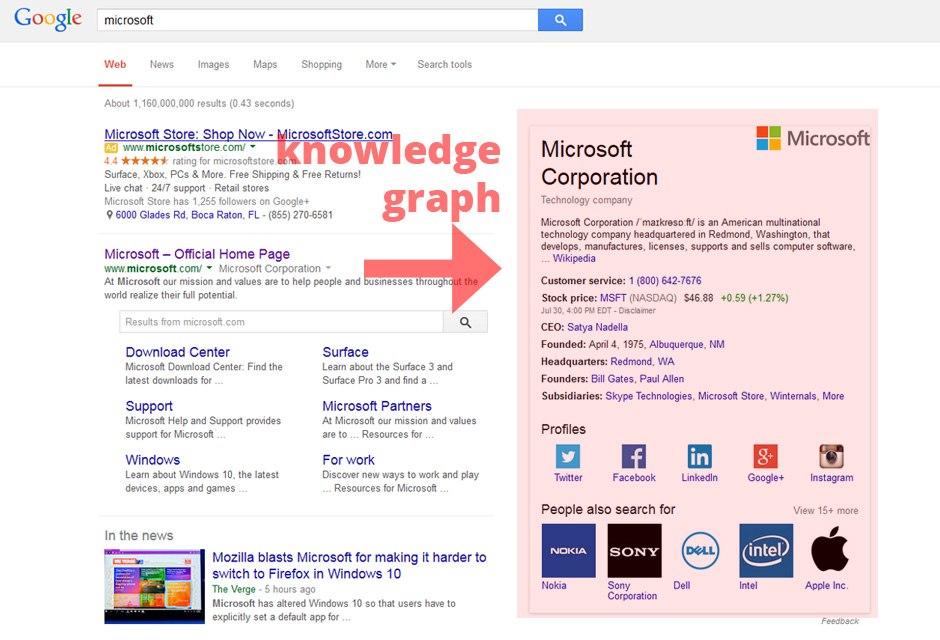
Knowledge Graph Example
Google has been experimenting with various features of the Knowledge Graph for the past few years now. Just remember, as recently as 3 years ago there was no Knowledge Graph whatsoever. Google is still in the experimental phase of things. For instance a few months ago Google decided to start adding social network icons in certain SERPs. In the beginning they only gave it to musicians and a-listers, but now the floodgates have been opened to everyone. New features come and go almost on a daily basis. I have this image saved from 2013 of this very same SERP as above, with no Knowledge Graph.
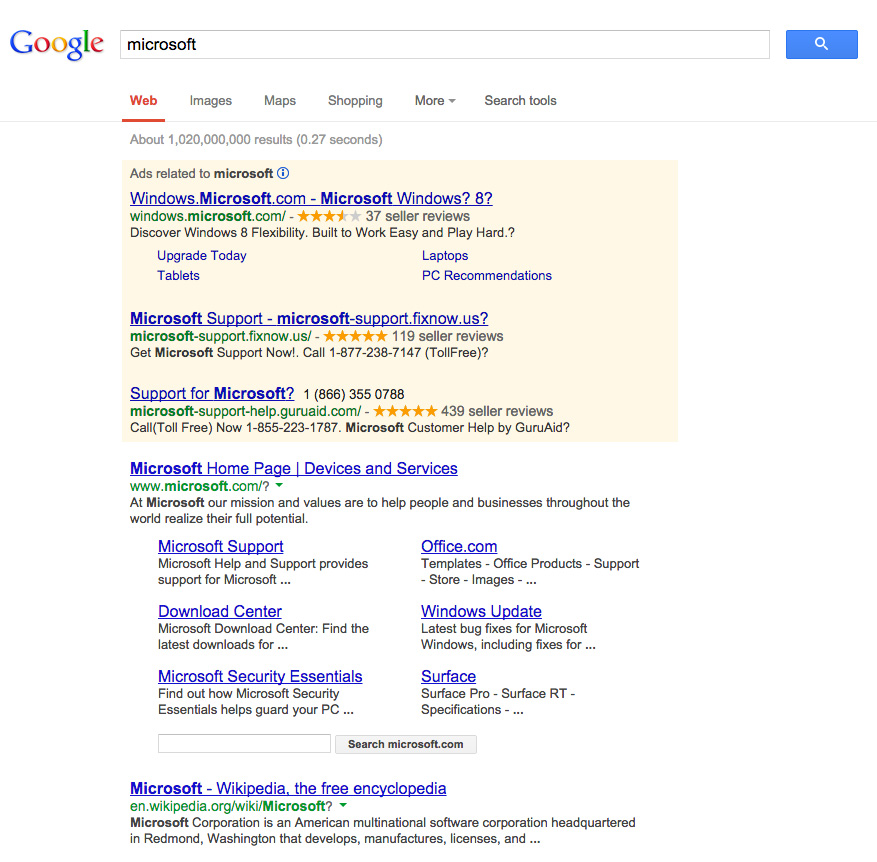
No Knowledge Graph Example From 2013
People, Places and Things
A knowledge graph can be given to any person, place or thing with enough authority. Since I am in the business of marketing myself, I've chosen my own "brand name" as a pet project to test things out on. You can Google "Patrick Coombe" from anywhere in the world and see a great example of this.
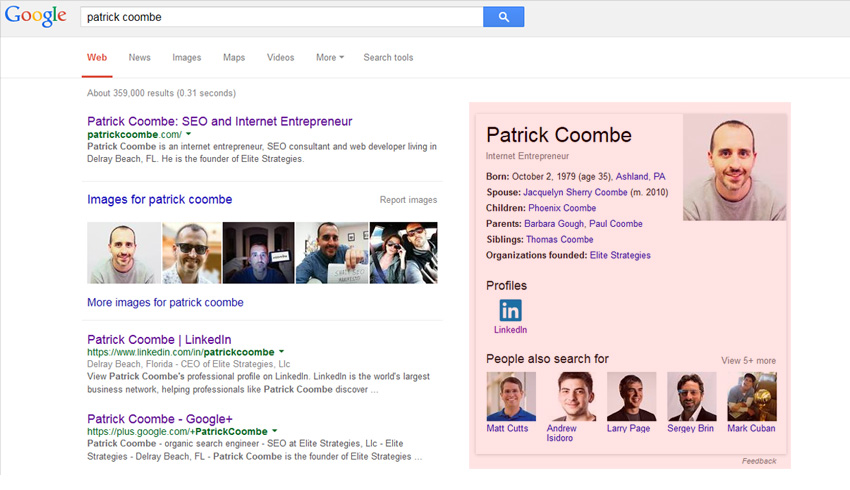
Patrick Coombe Results
This has been a very long and arduous process, but ultimately has resulted in a very authoritative position for my personal brand in the SERPs. But how did I make this happen? How does an average brand achieve this type of result with little to no authority?
For starters you need to think of your brand as an entity on the web, rather than just "a website." An entity consists of many factors, including but not limited to:
- A properly coded website with authority
- Structured data
- Other web properties
- Active social network profiles
- A multi-author blog
- References, citations, co-citations, and backlinks
- A Google+ Brand or Local Page (GMB)
- A Wikipedia Page (the golden ticket)
Granted, there are many brands that possess a Knowledge Graph without the above parameters but generally most of these are required.
Google uses a variety of data sources to answer questions and provide "featured snippets" a topic we will reserve for a later date. In this example you can see that Google used LinkedIn to answer the question "What is SERPWoo?":
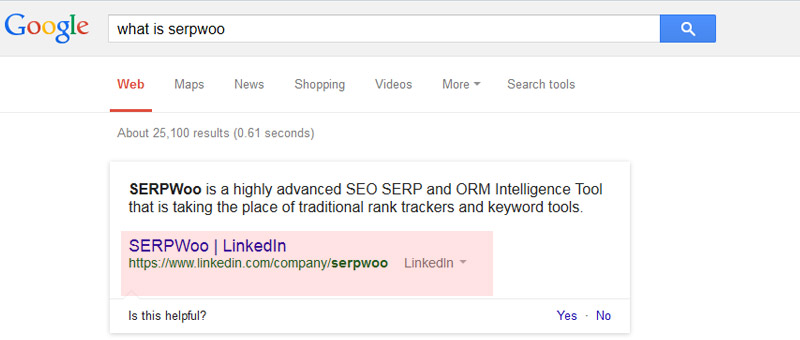
What Is SERPWoo Google Query
Ideally you want your website to be in control of these 'featured snippets.' This way when a question is answered your website is used for the source and you can drive direct traffic.
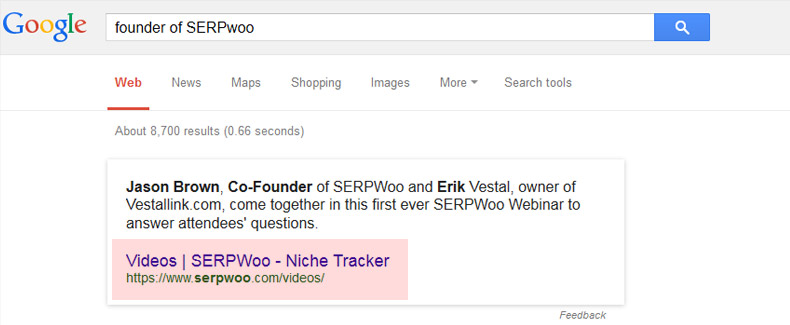
Founder Of SERPWoo Query
Structure your data
Whether you are a company, a person or something else if you are trying to gain a Knowledge Graph it would behoove you to start utilizing structured data. Don't worry, you don't need to be a web developer to make this happen you just need some drive and attention to detail.
One of the easiest ways to get started with structured data is with JSON+LD. JSON+LD enables you to add structured data to your website without having to modify your HTML elements. Personally one of my favorite guides to adding basic structured data to your website is a one written by Andrew Isidoro. In this particular example he explains how to add structured data for social network profiles, but in the process of doing this he also shows you how to add it for "organization" and "person" types.
If you aren't hip to JSON+LD and you want to use good old fashioned Schema, there are tons of places to find examples in the wild.
One super simple method that'll get you up and running in a few minutes is this schema generator. Fill in your info (for a person, business, etc) and it'll spit out the necessary schema in HTML format.
Take that code and paste it somewhere into your website. I personally markup any businesses I am working on in the contact page, and any people I am working on in the about us page. Note that this is only my personal preference but it has "worked" quite a few times.
If you are a WordPress user there are a number of plugins you can use to get the required markup. This is one option I ran across recently that seemed to get the job done. My advice is to embed the code manually so that you can avoid any version issues or other problems.
Freebase.com
Unfortunately I have some bad news. Up until about May of 2015, there was a huge secret that made it much easier to get a Knowledge Graph. Freebase, owned by Google allowed users to add data to their database. Knowledge Graph (or Knowledge Vault) was fed by Freebase and entries made into Freebase would commonly show up on Knowledge Graph. For instance I added my birthday and place of birth and within a few months Google was starting to recognize me as an entity.
But fear not, since Freebase was shut down Wikidata (part of Wikipedia) has taken over. The entries from Freebase are being merged and soon we will be able to add data to Wikidata. The kicker is moderation is going to be stepped up big time. I've already seen a number of SEO's try to add data to Wikidata and get shut down hardcore. Tony Edward wrote an amazing piece for Search Engine Land on how he leveraged Wikidata to obtain a Knowledge Graph.
A few months later I checked back and noticed his entry was flagged, and removed. These people do not play. So before you go making edits or additions, do your homework.
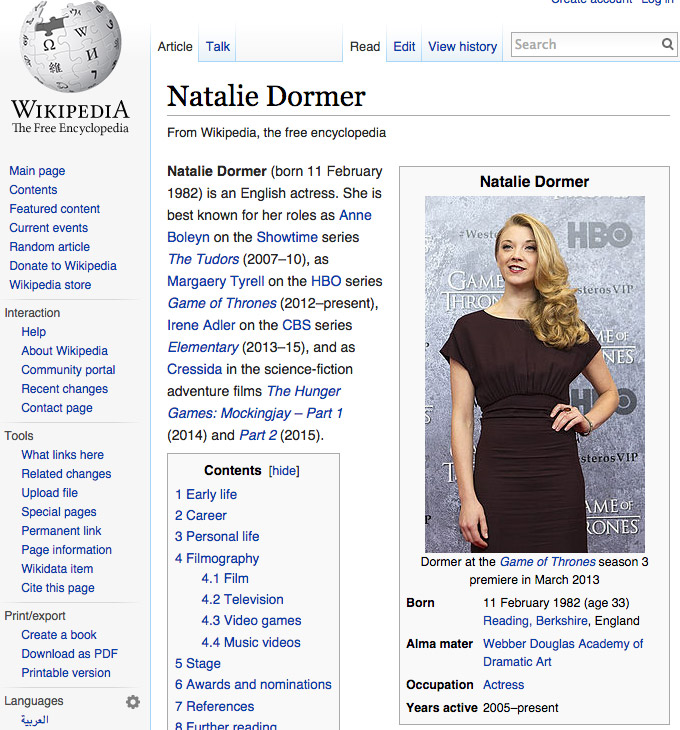
Natalie Dormer Wikipedia Page
Wikipedia
Know this: Wikipedia is your ultimate ticket into Knowledge Graph stardom. Google search engine pretty much inherently "trusts" Wikipedia and regularly uses it to power the Knowledge Graph. But don't go out and create a page for your brand just yet, it's going to take time, effort and most likely money. Just because you might have been able to hack your way a link from Wikipedia doesn't mean you'll be able to get a page.
Another warning: Once your name or brand gets flagged on Wikipedia it is going to be infinitely harder to get yourself a page. Ask yourself this question: "Is my brand notable enough that a fan or someone else is likely to create a page for me? "If the answer to that question is no, then your brand is not ready.
Even Danny Sullivan the founding "father of SEO" has had his notability called into question by Wikipedia admins not 1 but 2 times.
Build, build, build
I'm not here to tell you to use blackhat or rainbowhat SEO to build your brand but I do advise you to use a method that will keep your brand around for a few years. I have nothing against blackhat SEO but if you are trying to build trust signals you may want to consider remaining on the inside of Google's guidelines.
In my opinion, domain authority plays a huge part in all of this. Rarely do I see websites with low DA obtain Knowledge Graphs. On the contrary, just because your website is beaming with DA (or even coined the term) doesn't mean you will be gifted a Knowledge Graph:
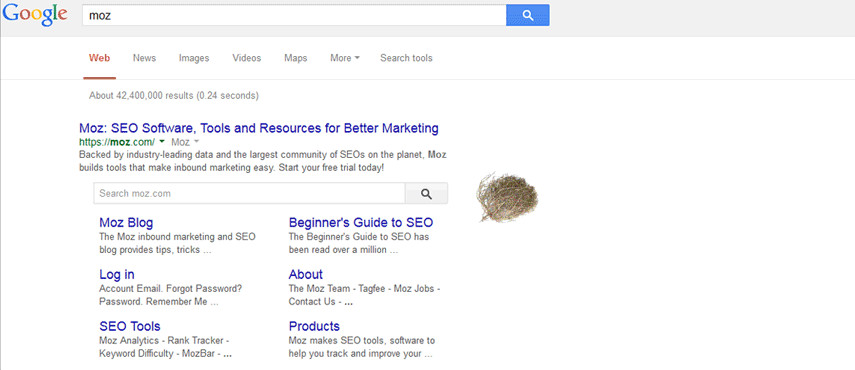
Moz Has No Knowledge Graph
Every mention of your brand on the web "counts" and definitely matters in the race to gain a Knowledge Graph for your company.
I can't tell you exactly how to obtain a Knowledge Graph for your company, but I can tell you what I did. If you think waiting for rankings takes patience multiply that by 10 and that is what Knowledge Graph results is like.
It has been my experiences that a Knowledge Graph is more of a slow process than a sudden event. What do I mean by that? If you are lucky when you first get a Knowledge Graph you'll get a tiny snippet of information such as your company name and logo.
As time passes, Google will add social network profiles, a description, related searches and much much more.
So how do I make money?
If you haven't figured this out by now perhaps it is time to revisit marketing and branding 101.
A SERP with a Knowledge Graph is infinitely more marketable and authoritative than one without it. It's almost as though Google is saying "we trust you."
Obtaining a Knowledge Graph result for your business can do wonders for your company. Visitors will be able to gain more information about your company and you will flex your dominance over your competitors that possess weak SERP results.
Having a Knowledge Graph can also be a large piece if you are doing offensive ORM. It is my opinion that every company should be in control of the entire first page for their "brand name" keyword. This includes the Knowledge Graph.
If you are selling a product or have an eCommerce store, having a Knowledge Graph can help you create legitimacy and credibility for your customers. Psychologically a Knowledge Graph result can act as a form of social proof for visitors looking to gain more information about your brand before making a buying decision.
Blackhat Knowledge Graphing

Yep, it's a thing. I don't know what law of science it is, but anytime there is a good thing someone is going to find a way to break it.
Already we are seeing many people make intentional edits to websites and Wikipedia with the intention of modifying the Knowledge Graph for evil. Just like certain people will create poor reviews and slanderous websites, others are now modifying data that feeds the Knowledge Graph to harm competitors.
Luckily Google does accept "feedback" directly through the SERPs and in my experience will react to this information right away, particularly if it is something damaging.
Closing thoughts
As I've already mentioned, obtaining a Knowledge Graph is more of a process, not an event. It doesn't just happen overnight. For a new business this is something you will have to work very hard at, and be very patient with.
If you are an SEO consultant, I would advise you to familiarize yourself with this knowledge so that you can pass on value to your clientele. I've personally started offering Knowledge Graph Optimization as a service. The "SE" in "SEO" means much more today than just 10 results. As an SEO you must be able to maintain control over all aspects of the search results, not just the placement of the organic listings. This includes the results, knowledge graph, answer boxes, featured snippets and everything in-between.
Two people I'd really like to thank are Bill Slawski of SEO by the SEA and Aaron Bradley of SEO Skeptic. Their knowledge (no pun intended) on this subject is far beyond anything I know and is reflected in their writing on the subject.
